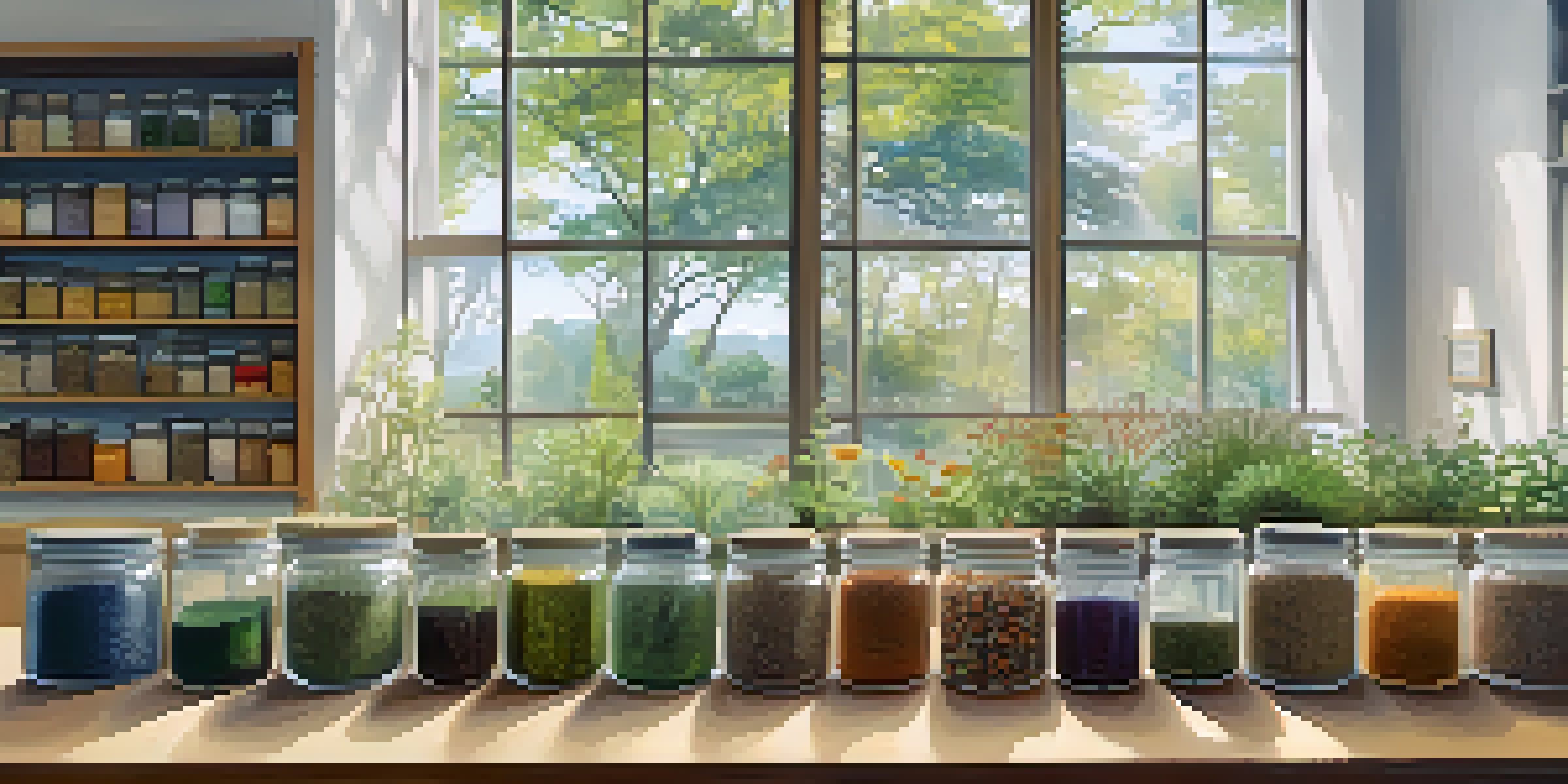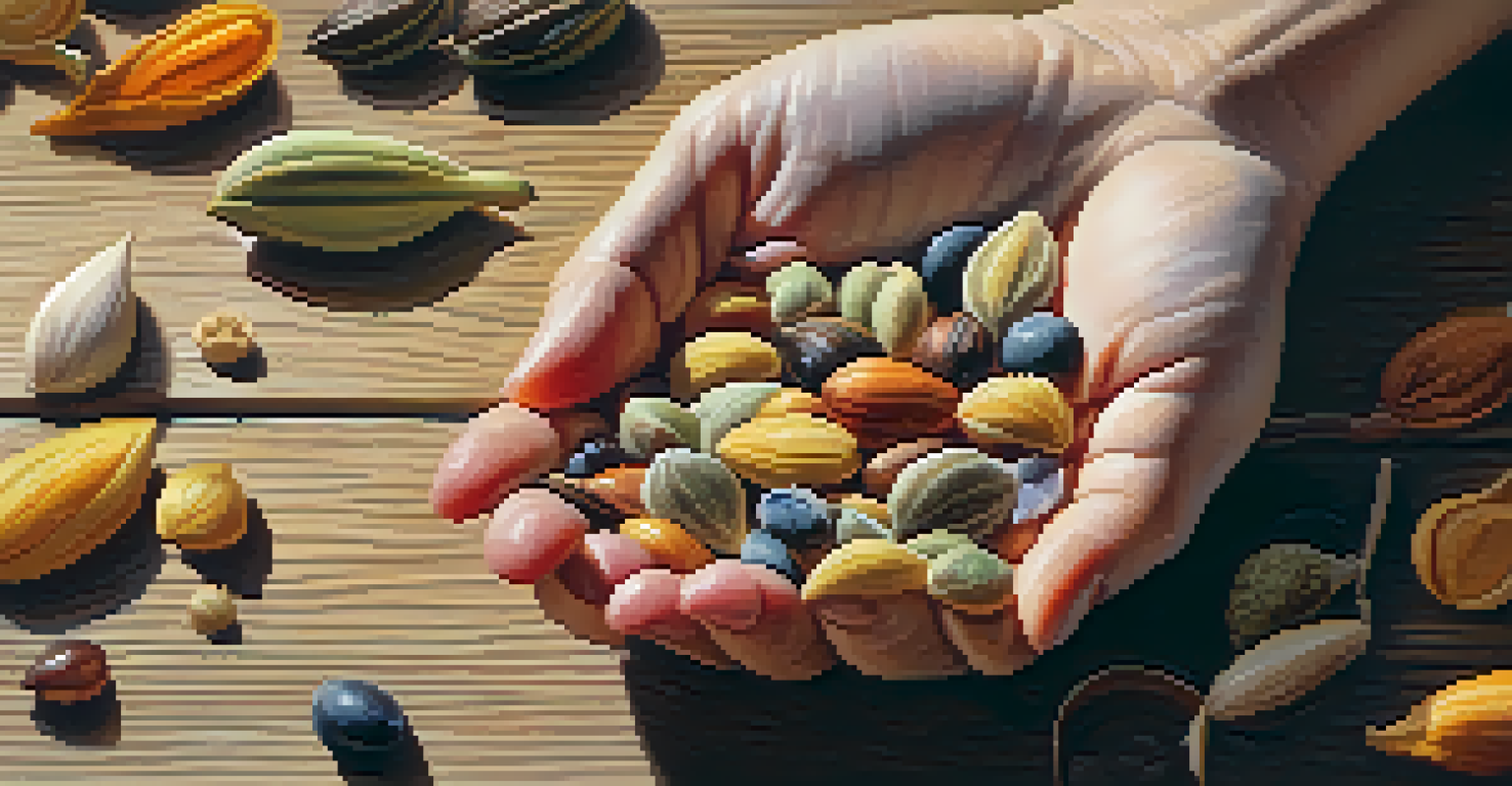The Importance of Seed Banks in Plant Conservation Strategies

Understanding Seed Banks and Their Purpose
Seed banks are facilities that collect, store, and preserve seeds from a variety of plant species. Their primary purpose is to safeguard genetic diversity, ensuring that plant life can be conserved for future generations. By holding seeds in controlled conditions, seed banks act as a sort of insurance policy against extinction and habitat loss.
The extinction of plant species is a serious threat to our planet's biodiversity. Seed banks play a crucial role in preserving genetic diversity for future generations.
These banks are particularly crucial in the face of climate change, habitat destruction, and other human activities that threaten plant species. For instance, a seed bank can store seeds from endangered plants, providing a way to restore populations when their natural habitats are compromised. This proactive approach allows us to maintain biodiversity, which is essential for healthy ecosystems.
Related Resource
Additionally, seed banks serve as valuable resources for researchers and conservationists. They provide genetic material for breeding programs aimed at developing resilient crops and restoring degraded habitats. In this way, seed banks are not just about preservation; they also play a pivotal role in ongoing ecological research and agricultural innovation.
The Role of Seed Banks in Biodiversity Conservation
Biodiversity is the variety of life on Earth, and it is essential for ecosystem health. Seed banks contribute significantly to biodiversity conservation by preserving a wide range of plant species, including those that are rare or endangered. This diversity is vital for maintaining ecological balance and supporting food webs.

For example, the loss of a single plant species can have a cascading effect on the entire ecosystem, impacting the animals that rely on it for food and shelter. By storing seeds from diverse species, seed banks help ensure that we can restore these vital plants if they become extinct in the wild. This strategy not only protects the plants themselves but also the myriad of life forms that depend on them.
Seed Banks Preserve Plant Diversity
Seed banks collect and store seeds to safeguard genetic diversity, ensuring the future conservation of various plant species.
Furthermore, seed banks can facilitate the restoration of ecosystems after disturbances, such as wildfires or invasive species. By providing access to native seeds, conservationists can re-establish plant communities that are crucial for the recovery of the ecosystem. This restorative aspect highlights the importance of seed banks in maintaining the health of our planet.
Seed Banks as a Resource for Agriculture
Seed banks are not only about conservation; they also play a significant role in agriculture. They provide a genetic reservoir for crop varieties that may be more resilient to pests, diseases, and changing climate conditions. This diversity is crucial for food security, as it allows farmers to adapt to new challenges that may arise.
In every seed lies the potential for life. By preserving seeds, we preserve the legacy of our natural world.
For instance, during a severe drought, farmers can turn to seed banks for drought-resistant crops that can thrive in harsh conditions. This not only helps sustain food production but also ensures that farmers can maintain their livelihoods. By preserving traditional and heirloom varieties, seed banks also protect agricultural heritage and cultural practices.
Related Resource
Moreover, seed banks can support research and development in agriculture, leading to innovations that enhance crop yields and sustainability. By collaborating with researchers, seed banks can facilitate breeding programs that combine desirable traits from different plant varieties, ultimately benefiting global food production systems.
Global Initiatives Supporting Seed Banks
Around the world, various initiatives are working to enhance the effectiveness of seed banks. Organizations like the Global Crop Diversity Trust and the Millennium Seed Bank Project are dedicated to collecting and conserving seeds from diverse ecosystems. These collaborations help to ensure that seed banks have the resources and knowledge needed to succeed in their mission.
International treaties, such as the International Treaty on Plant Genetic Resources for Food and Agriculture, further support seed banks by promoting the sharing of genetic resources. Such agreements foster cooperation among countries, allowing seed banks to exchange seeds and information. This global effort strengthens the conservation network and enhances biodiversity protection.
Support for Agriculture and Research
They provide vital genetic resources that help develop resilient crops and enhance agricultural sustainability amidst climate challenges.
Additionally, local initiatives play a critical role in the success of seed banks. Community seed banks, often run by local farmers and organizations, not only preserve local varieties but also empower communities to take charge of their agricultural practices. This grassroots approach ensures that traditional knowledge is respected and integrated into modern conservation strategies.
Challenges Facing Seed Banks Today
Despite their importance, seed banks face several challenges that could undermine their effectiveness. One major concern is funding; many seed banks operate on limited budgets, making it difficult to maintain facilities and conduct research. Without adequate financial support, these vital institutions may struggle to fulfill their mission.
Moreover, the long-term viability of stored seeds can be compromised by factors such as temperature fluctuations, humidity, and pest infestations. Ensuring optimal storage conditions requires careful monitoring and management, which can be resource-intensive. Additionally, the need for regular germination testing means that seed banks must continuously engage in active management of their collections.
Related Resource
Lastly, the threat of climate change poses a significant risk to seed banks. As global temperatures rise and weather patterns change, the ecological niches that many plants occupy may shift or disappear. Seed banks must adapt their strategies to account for these changes, ensuring that they can continue to protect the genetic diversity of plants as conditions evolve.
The Impact of Climate Change on Plant Diversity
Climate change is one of the most pressing threats to plant diversity worldwide. As temperatures rise and weather patterns become more erratic, many plant species struggle to adapt to their changing environments. This can lead to population declines or even extinction, making the role of seed banks more critical than ever.
Seed banks can help mitigate the impacts of climate change by preserving seeds from species that may face significant challenges in the future. By maintaining a diverse collection of seeds, these facilities can support restoration efforts aimed at reintroducing plants to their original habitats, even as those habitats change. This proactive approach helps ensure that we can respond effectively to the threats posed by climate change.
Global Initiatives Strengthen Efforts
Various local and international initiatives work together to enhance the effectiveness of seed banks in conserving plant diversity.
Furthermore, seed banks are involved in research that seeks to understand how plants respond to climate change. This research can inform breeding programs and conservation strategies, helping to develop resilient plant varieties that can thrive in new conditions. By understanding the dynamics of plant adaptation, seed banks can play a vital role in securing the future of global biodiversity.
How You Can Support Seed Banks and Conservation Efforts
Supporting seed banks and plant conservation efforts is something everyone can contribute to. One of the simplest ways to help is by spreading awareness about the importance of biodiversity and the role of seed banks in protecting it. Sharing knowledge with friends, family, and your community can inspire others to take action.
You can also consider donating to local or global seed bank initiatives. Many organizations rely on contributions to maintain their operations and expand their collections. Your financial support can directly impact their ability to conserve plant diversity and conduct vital research.

Finally, consider getting involved with community gardening or planting initiatives that focus on native species. By cultivating local plants and promoting biodiversity in your own backyard, you can contribute to the preservation of local ecosystems. Every small action counts in the broader effort to protect our planet's precious plant life.